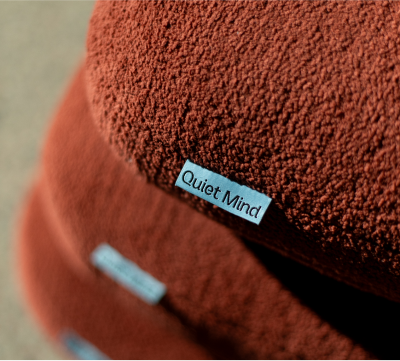Some days feel like too much all at once. You know what needs doing, but your mind can’t quite pick where to begin. For people with ADHD, this isn’t laziness, it’s a neurological mismatch between intention and execution.
The 1-3-5 rule is a simple management tool designed to help reduce mental clutter and guide your daily rhythm. It brings structure to chaos by helping you work on your to-do list in a way that honors your brain’s capacity for focus and energy.
It’s not about perfection. It’s about choosing what matters, so you can get more done, without the spiral of burnout.
How Does the 1-3-5 Rule Support ADHD Brains?
ADHD often makes it hard to filter what’s urgent, what’s important, and what just feels loud in the moment. A long to-do list can feel equally weighted, where every item demands the same attention, leading to inertia or panic.
The 1-3-5 rule shifts that and helps managing ADHD. It helps you decide what’s most important without needing to re-sort your brain every hour. By breaking tasks into categories, it makes it easier to stay on track, reduce decision fatigue, and make meaningful progress.
What Are the Three Task Categories in the 1-3-5 Rule?
The heart of the 1-3-5 rule is in its simplicity. You begin each day with one major task, three medium, and five smaller tasks. This balance is designed to help you manage your time, energy, and attention with more clarity.
Each category serves a distinct role in your daily routine:
- 1 Big Task: A large task that anchors your day. It may be a major work assignment, a planning session, or anything that feels heavy but important. Think: “What’s the biggest task I want to feel proud of completing today?”
- 3 Medium Tasks: These are still meaningful but don’t take up your entire workday. They might include a client email, prepping a meal, or making progress on a project management item.
- 5 Small Tasks: These are your five minor tasks, the small chores or errands that create movement and momentum. Examples include responding to a quick message, folding laundry, or ordering a refill of something you need.
This structure turns a chaotic day into one list of tasks that feel doable. It’s a rhythm you can return to, even when ADHD throws you off course.
Why Does the 1-3-5 Rule Help With Focus and Overwhelm?
One of the hardest parts of living with ADHD is deciding what to do next. The 1‑3‑5 rule helps improve focus by reducing overwhelm and giving your brain a clear, structured path forward. For people with ADHD, one of the hardest parts of the day is deciding what to do next.
Instead of looking at a long, chaotic to-do list, the 1‑3‑5 rule offers a simplified, visual plan:
- 1 big task to anchor the day.
- 3 medium tasks that feel meaningful.
- 5 small tasks that keep momentum going.
This structure limits the number of active decisions you have to make. It acts as a visual boundary that says, “This is enough for today,” so you’re not constantly questioning what’s next or feeling like you need to do more.
Why It Works for ADHD Brains
ADHD often involves challenges with executive functioning, skills like planning, shifting focus, and managing time. The 1‑3‑5 rule supports those areas by:
- Reducing decision fatigue: You plan once, and return to the same list throughout the day.
- Avoiding task switching: With a set structure, you’re less likely to bounce between unrelated tasks.
- Creating realistic expectations: You’re no longer aiming for “do it all,” just “do what matters most.”
- Building momentum: Small tasks give quick wins that can spark motivation for bigger ones.
Backed by Research
Research in cognitive science supports this kind of structured approach. A 2016 study on “cognitive offloading” (Risko & Gilbert) found that writing down plans and externalizing decisions helps people focus and follow through. This also shows that routine and visual task planning improve task initiation and reduce ADHD-related stress.
In short, the 1‑3‑5 rule works not because it’s strict, but because it’s clear, supportive, and realistic. It turns chaos into structure and helps your attention land where it belongs: on what truly matters.
Where the 1/3/5 Rule Comes From
While the 1-3-5 rule wasn’t created specifically for ADHD, it fits beautifully with how many people with ADHD function best, especially when juggling multiple demands or facing tight deadlines.
It originally gained popularity in productivity and time management communities for its balance and simplicity. Over time, ADHD coaches and researchers began adapting it as a lightweight alternative to more rigid management techniques.
Origins in Productivity Circles
The method echoes familiar systems like:
|
Productivity System |
Description |
Link to 1-3-5 Rule |
|
Turns tasks into concrete action items |
Both help break down complexity |
|
|
Focuses on urgency vs. importance |
Both support mindful prioritization |
|
|
Aligns tasks to values and long-term goals |
Helps identify what’s most important |
By pulling from these established ideas and softening them, the 1-3-5 rule creates a format that’s supportive rather than strict. You don’t need to follow a rigid timeline. You just need specific blocks of time and a plan that gives each task the focus they deserve.
Why Do ADHD Coaches Recommend the 1-3-5 Rule?
The 1-3-5 rule gained traction in ADHD communities for a reason: it works with the brain, not against it. People with ADHD often describe the relief of using a method that provides guidance without judgment.
ADHD coaches recommend this method because it:
- Respects shifting focus and energy.
- Offers a tangible framework for daily and long-term productivity.
- Helps build confidence through follow-through.
Instead of pressuring you to do more, it gives structure to get things done in a way that honors executive functioning differences. It’s a tool that fits into real life with room to breathe.
You’re not just ticking boxes, you're learning how to implement the 1-3-5 rule as a sustainable management technique that supports your entire workday.
Why the 1/3/5 Rule Works Well for ADHD
When the mind feels scattered, prioritization becomes a battle. The 1-3-5 rule gently solves that. It breaks tasks down, filters out the noise, and anchors you in what matters most.
Here’s why it works so well for ADHD:
Simplifies Decision-Making and Prioritization
Deciding what to do next is often the hardest part of the day. This rule sets the plan in advance. It gives you one list with a structure that pre-sorts importance, so you can start without second-guessing.
You don’t have to decide all over again every hour. You just return to the task of the day, and keep moving forward.
Reduces Task Paralysis and Perfectionism
Too many options can stall progress. So can the belief that everything is equally important. The 1-3-5 rule helps contain those spirals by giving each task the space and weight it deserves.
You can start small. You can shift gears. You can finish even if it’s imperfect. That’s real progress in ADHD using tools that align with how your brain works best.
How the 1/3/5 Rule Compares to Other ADHD Productivity Systems
There’s no single right way to manage your ADHD. Some people thrive on structure, while others need flexibility. The beauty of the 1-3-5 rule is that it can support both.
Here’s how it stacks up against other common time management approaches:
1/3/5 vs. Time Blocking
Time blocking assigns specific blocks of time to each task. It’s great for routine building or calendar planning, but it requires more upfront organization.
- Use when you need help sticking to a schedule.
- Combine it with the 1-3-5 rule to map when each task will happen.
1/3/5 vs. Pomodoro Technique
The Pomodoro Technique breaks work into 25-minute sprints with short breaks. It boosts focus but doesn’t prioritize what’s most important.
- Use Pomodoro to execute the tasks from your 1-3-5 list.
- Ideal for days when energy is low but you still need to get more done.
Together, these systems create a full ecosystem for project management: the 1-3-5 rule tells you what to do, and Pomodoro or time blocking helps you do it.
1-3-5 vs. Task Batching
Task batching groups similar types of work together so you can complete them in one stretch without switching contexts. For example, you might batch all emails, errands, or calls. This helps reduce the cognitive cost of task-switching, a common challenge with ADHD.
- Use batching for the 3 or 5 items on your list that are low-stakes but mentally draining when scattered.
- Great for clearing mental clutter without overloading your executive function.
Streamlining repetitive tasks and reducing distraction from switching between unrelated work.
1-3-5 vs. Eat That Frog
“Eat That Frog” is a productivity strategy focused on doing the hardest, most important task first thing in the day, your “frog.” For many with ADHD, avoidance is a major barrier, and this method helps tackle procrastination head-on.
- Use it to complete your “1” (major task) early, so the rest of the day feels lighter.
- Can be combined with the 1-3-5 framework by anchoring the day with your highest-impact task.
This method is best for overcoming avoidance, boosting motivation, and reducing mental load early.
These systems aren’t meant to compete, they can work together. The 1-3-5 rule helps you decide what to focus on. Systems like Pomodoro help you stay engaged while doing it. Time blocking gives you structure, task batching builds efficiency, and Eat That Frog sets a motivational tone for the day.
How to Use the 1/3/5 Rule in Daily Life
Once you begin to implement the 1-3-5 rule, it becomes more than a productivity trick, it becomes part of how you organize your daily routine. It doesn’t require an elaborate system or complex setup. Just a moment of clarity and a few minutes of planning.
Step-by-Step Guide to Planning with 1/3/5
1. Start with a brain dump. Write down everything pulling at your attention.
2. Choose one major task and make it your anchor for the day.
3. Pick 3 important tasks that are manageable but still meaningful.
4. Add 5 smaller tasks, quick wins or small chores that help you move forward.
5. Use your list as a gentle compass throughout your day, not a rulebook.
This approach helps you focus without spiraling. You’re not guessing what to do next. You’re already working from one list that reflects your priorities and your capacity.
Adjusting the Rule for Low-Energy or Busy Days
The 1-3-5 rule is flexible by design. Not every day calls for the same level of output, and trying to force it can lead to burnout. Instead, adapt the rule to match your energy, demands, and real-life circumstances.
|
Day Type |
1 Big |
3 Medium |
5 Small |
|
Normal |
1 key project |
3 important tasks |
5 quick wins |
|
Low-Energy |
1 lighter task |
1–2 manageable items |
2–3 small chores |
|
Busy |
1 must-do |
1–2 urgent tasks |
1–2 essential to-dos |
Scaling back doesn’t mean doing less, it means doing what’s most important with the energy you have. This flexibility is what makes the 1-3-5 rule such an ADHD-friendly management tool. It works across seasons, deadlines, and even rough mornings.
What Tools Can Help You Use the 1-3-5 Rule More Easily?
You don’t need fancy software to use the 1-3-5 rule, but for many, a little tech support can help keep things visible and organized. These tools are designed to help streamline your list of tasks and give each one the focus they deserve.
- Todoist – Clean interface and customizable groups let you sort big, medium, and small tasks easily.
- Trello – Ideal for visual thinkers; boards help you track and shift your daily priorities.
- Any.do – Integrates tasks with reminders, making it easier to stay aligned with your daily tasks and schedule.
Prefer analog methods? Sticky notes, whiteboards, or paper planners can be just as powerful. What matters most is externalizing your plan, getting it out of your head so you can stay on track throughout your workday.
Some people find that pairing the 1-3-5 rule with tactile tools like a weighted pillow or a cozy sensory space can also reduce stress while transitioning between tasks. Calming your body can often calm your attention.
Calming Tools for Transitions and Focus
Shifting between tasks or managing restlessness can be difficult. Weighted pillows offer a tangible way to calm the body and center attention through deep pressure stimulation (DPS).
Research shows that weighted blankets, and by extension weighted pillows, can improve sleep quality, support emotional regulation, and reduce restlessness in both children and adults with ADHD.
Quiet Mind’s Weighted Pillow is designed to deliver this calming effect in a compact, portable form. It helps reduce anxiety and improve focus, making it a practical tool for both home and work environments.
What Do Real People With ADHD Say About the 1-3-5 Rule?
Online forums and ADHD support communities frequently highlight the 1‑3‑5 rule as one of the most accessible tools for reducing overwhelm and organizing daily tasks.
Real Voices from Reddit and Beyond
-
In a widely discussed Reddit thread on r/productivity, one user wrote:
“I’ve messed around with a few workday planning systems… and keep coming back to the 1‑3‑5. The best thing about the system is it provides guardrails that keep me realistic about what I can reasonably accomplish in one workday.” -
Another user on r/ADHD reflected:
“I use a 3-item list. I can always manage 3 things, even on my worst days, and often, it helps me do more.”
This approach mirrors the 1‑3‑5 rule's goal: avoid task overload while building momentum. -
In a separate thread, another commenter noted a potential drawback:
“1‑3‑5 is definitely good at the start, but then you have that obligation to get 6 tasks done in a day, which can lead to burnout…”
What This Feedback Teaches Us
These testimonials reveal several consistent themes:
- Gentle Structure: The 1‑3‑5 rule offers realistic planning “guardrails,” which many ADHDers say makes daily structure feel more human and less punishing.
- Less Overwhelm: Limiting daily tasks helps reduce mental clutter, especially on chaotic or low-energy days.
- Emotional Wins: Completing just the “right amount” of work, rather than everything, builds a real sense of accomplishment.
- Adaptability is Key: Even helpful systems can cause stress if used rigidly. Users recommend staying flexible and tailoring the method to personal capacity.
What Are the Common Pitfalls of 1-3-5 rule and How to Avoid Them
Like any tool, the 1-3-5 rule can lose its effectiveness if it’s applied too strictly or without reflection. The key to success isn’t perfection, it’s flexibility and responsiveness. Here are a few common missteps, especially for people with ADHD who are eager to make the most of this management technique:
-
Sticking too closely to the numbers:
Not every day needs exactly nine tasks. When energy is low, adjusting to a 1-2-3 or even 1-1-2 plan can prevent burnout. The goal is progress, not performance. -
Treating all tasks as equal:
A phone call, a report, and laundry may all be “small” on paper, but the emotional and mental weight can vary. Sort your list of tasks by effort and impact, not just duration. -
Skipping reflection:
Without regular check-ins, your daily routine can slide back into autopilot. Take time once a week, maybe Friday afternoon or Sunday evening, to review what worked and where you felt stuck.
The 1-3-5 rule isn’t about strict discipline. It’s about learning how to stay on track in ways that adapt to your reality. Flexing the structure isn’t failure, it’s skillful adjustment. That’s how you make this tool truly ADHD-friendly.
When the 1/3/5 Rule Might Not Be Enough
Some days, one big task doesn’t feel like enough space, especially when you’re managing larger projects or multi-step goals. This is common for ADHD brains, where even the most effective time management systems need room to flex.
Instead of abandoning the structure, adapt it.
What to Do on Days with Larger Projects
When you're working on something complex, like a presentation, report, or home project, break that one major task into smaller steps. Treat each phase as its own daily “big task” so you can stay on track without the pressure to finish everything at once.
Example: Final Report
- Research
- Outline
- Draft
- Review
- Submit
This approach lets you maintain momentum while giving your focus and energy the containment it needs. You’re still using the 1-3-5 rule, you’re just zooming in.
Alternative Structures: 1/2/3 or Theme-Based Days
There’s no one-size-fits-all system. Some days feel more spacious. Others feel overloaded before you even begin. If the 1-3-5 rule feels too rigid or heavy, try one of these gentler alternatives:
|
Structure |
Description |
Best For |
|
1-3-5 Rule |
One big, three medium, five small tasks |
Balanced productivity days |
|
1-2-3 Rule |
One big, two medium, three small |
Low-capacity or high-focus days |
|
Theme Days |
One overarching focus (e.g., admin, creative) |
Deep work or batching tasks |
Some days need fewer moving parts. Others benefit from simplicity or depth. The key is designing your day around what’s most important, not what looks productive on paper.
How to Use the 1/3/5 Rule Long-Term
Consistency doesn’t come from willpower, it comes from supportive systems. The 1-3-5 rule is more likely to last when it's embedded into your day through visual cues, rituals, and gentle accountability.
Use Visual Reminders and External Accountability
- Keep your list visible; on a whiteboard, sticky notes, or in a favorite app.
- Set reminders to revisit your task of the day or update your plan.
- Share your daily goals with a friend, coworker, or ADHD coach.
- Use Quiet Mind’s printable prompts or minimalist planning tools to stay grounded.
Making the 1-3-5 rule a part of your daily routine transforms it from a method into a rhythm.
Reflect and Adjust Weekly
A few minutes of review each week can prevent frustration and help you course-correct gently. Try asking:
- What helped me get more done?
- What drained me?
- What would feel more supportive next week?
These rituals like Friday check-ins or Sunday resets, help you align your list with your life. Over time, the 1-3-5 rule becomes more than an ADHD management technique. It becomes a quiet guide for your daily and long-term priorities.
Final Thoughts: Is the 1/3/5 Rule Right for You?
If you’ve ever stared at a long list of daily tasks and felt frozen, the 1-3-5 rule may offer just enough structure to help you move, not perfectly, but purposefully.
It isn’t about doing everything. It’s about identifying what truly matters, and giving each task the focus it deserves. For many people with ADHD, that shift alone can turn a scattered morning into a calmer, more centered workday.
Whether you’re managing a full schedule, a creative project, or just trying to stay afloat, the 1-3-5 rule can help you get things done without pushing you into burnout. You don’t have to master it all today. Start with one major task, give yourself room to breathe, and let clarity replace chaos, one list at a time.
About Quiet Mind
At Quiet Mind, we believe that structure should feel supportive not restrictive. For people with ADHD, time management often means finding systems that honor the nervous system, reduce overwhelm, and bring clarity to both daily and long-term goals. Tools like the 1-3-5 rule work best when they’re paired with gentleness, flexibility, and routines that meet you where you are.
If you’re building a new planning ritual or creating space for your task of the day, our weighted pillow offers a grounding way to begin. It delivers steady, even pressure across the chest, lap, or shoulders, helping reduce restlessness, settle racing thoughts, and support focus during your workday.
Whether you’re organizing your list, pausing between tasks, or managing a wave of burnout, this tactile support can become part of a rhythm that feels calm, clear, and centered; one task, one breath, one list at a time.
FAQ
What is the 1/3/5 rule, and how does it help with ADHD?
The 1/3/5 rule is a task management strategy that breaks your to-do list into one big task, three medium tasks, and five small tasks. It helps reduce overwhelm and offers structure for ADHD brains that struggle with prioritization and follow-through.
Can I adjust the 1/3/5 rule to suit my needs?
Absolutely. The rule is meant to guide, not constrain. On low-energy or high-demand days, scale it down or shift the ratios to match your capacity.
How does the 1/3/5 rule compare to time blocking or the Pomodoro technique?
The 1/3/5 rule helps you choose your priorities. Time blocking and Pomodoro help you execute them. Many find success combining the two.
How do I maintain the 1/3/5 rule over the long term?
Weekly reviews, visual cues, and gentle accountability all help. Keep the system adaptable so it supports, not pressures, you.
What if the 1/3/5 rule doesn’t work for me?
Then it's not the right tool for today. Try other ADHD-friendly approaches like theme days or the 1/2/3 structure. Productivity isn’t about the perfect method. It’s about finding your rhythm.

















